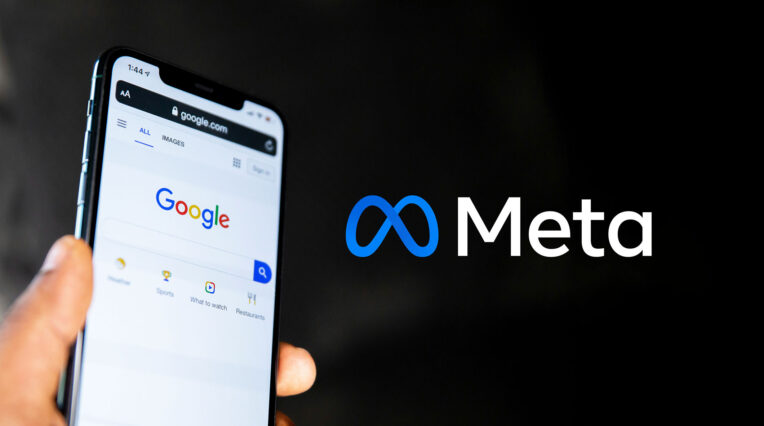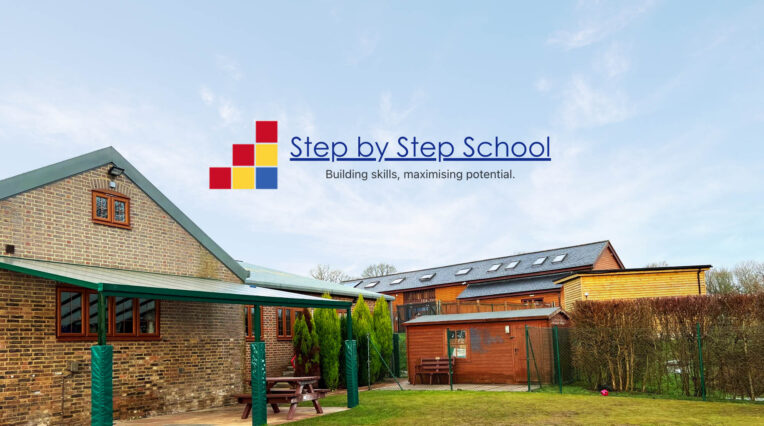Paid media | 14/09/2017
Measuring the ROI of social media marketing – BrightonSEO
On Friday 15th September 2017 I spoke at BrightonSEO about measuring the ROI of social media. Below are all the slides (minus the obligatory “About Me” bit, which you can find here if you’re interested), along with some practical advice and examples. Please enjoy!
If you’re here, the chances are you have some questions about measuring social media and how it can have a quantifiable impact on your marketing. Well, you’re not alone…
It’s no wonder there is so much confusion in the industry when there is so much conflicting advice out there.
You may have heard people tell you that measuring social media success is a completely different ball game to other channels, and that it’s all about engagement and likes. Well, respectfully, they’re talking rubbish. Social media is like any other marketing channel in that ultimately it needs to contribute to your bottom line. What that looks like for your business depends on your marketing mix, but if you’re chasing vanity metrics then you’re going to be grossly misled.
It is important to note, however, that the customer experience is complex, and social media is rarely a direct conversion tool. Consumers aren’t on social media to buy things, they’re on there too… well, the clue’s in the name – socialise. If you bombard them with sales messages when they’re trying to chat with their friends, you’re going to get on their nerves pretty quickly. So, even for the slickest of ecommerce businesses, social media is rarely as simple as spending a fixed amount of money to get a defined amount back. Don’t think about social media in the same way you think about, say, PPC; approach it more the way you would PR or OOH advertising.
As an industry, we’ve become a bit obsessed with measuring as much as possible. We discovered analytics and then got a bit over-enthusiastic and starting measuring EVERYTHING. The problem is, that has led us to be very granular in our approach and attribute value to each channel in isolation. And that’s just not how real life works.
The customer purchase journey isn’t linear, and consumers can take a long time to make a purchase decision. For a high-ticket item, the decision might be extremely drawn out, but even for an FMCG brand, if you’re trying to get a customer to switch from their regular brand of water to yours, that kind of habitual behaviour can take a while to change. Furthermore, customers go through multiple touchpoints with multiple channels. Shockingly enough, some of those will not be digital! So don’t expect to know every move they make. Dark social and anonymous browsing are on the rise precisely because they don’t want you to know every move they make.
Attribution tools exist, and Google is launching a free one any day now that we’re all looking forward to testing out, but it’s dangerous to rely too heavily on these as they will never be completely accurate.
So when you’re thinking about your marketing, think of it as one thing, not a collection of disparate entities. Your different channels are just different ways to reach and engage your customers, and guide them along the buying journey. So if you’re looking at setting ROI metrics, look at where the weak links are in your existing purchase cycle and think about how social media can help you with those. Be specific in what you want to measure, so you know that you’re looking at the right things, rather than just gazing at a spreadsheet full of random numbers.
If brand awareness and helping customers discover your company in the first place is your biggest challenge, you might want to measure things like online share of voice (using listening tools to measure the number of people talking about your brand and the number of people talking about your competitors, then working out what percentage of the conversation belongs to you – your metric is then growing that percentage); you might want to track the mentions of your brand on social media and look to increase those; the number of targeted people you’re reaching with brand messages on social media would be an important measure, making sure that those people are engaged with that message; and tracking your follower growth is useful here. Note that I said follower growth, not followers. Don’t set yourself a random number you want to hit – like 10,000 Twitter followers – just because it looks nice; those can be bought easily and they’ll give no value to your brand whatsoever. Instead, you want to look for a steady rate of growth of organic as well as paid followers, making sure that any paid advertising you’re doing is to a very targeted audience that will care about your brand, and monitoring the engagement rates of your content to ensure those new followers are actually interested in you. Otherwise, if your engagement rate drops, your reach will drop and you’re just talking into the void and to three bots in China.
At the research phase, you want to send people to your website to have a look at the benefits of your products over all the others, so tracking traffic from social media is a good idea. If you’re promoting particular products or services on social media, and incorporating specific messaging, then you should see an increase in search volumes for those terms. However, 43% of consumers now start their search on social channels not search engines, and that number is growing, so you also need to make sure there are plenty of glowing recommendations from happy customers – measuring positive mentions and reviews will be a good one here.
The consideration phase can be one that customers go in and out of for some time, depending on the value of the product. While they’re pondering – probably not actively thinking about your brand or your competitors, but subconsciously looking for signals of who would be best to go with – you want to be building a relationship with them so that, ultimately, they’ll decide they like you best. Product choices are based far more on emotion that any of us like to admit. Engagement rates of your social content are incredibly important here – if 10,000 people are seeing it but only two are liking it, you’ve got a problem. You’d still like to see traffic coming to your website from social channels, but it’s probably more likely to be organic and direct traffic that’s increasing at this stage, because they’ve already been to your site once at the previous stage. Social media can also be a very useful data capture tool – if you get them signed up to your email list now, you can keep in touch with them and prod them with more sales focused messages as email is a much more effective conversion tool. Making sure everything you do is GDPR compliant, of course!
You’d be hard-pressed to find a business that didn’t want to make more sales. As I said earlier, social media isn’t the most effective conversion tool, and it is vital to understand the strengths and weaknesses of each channel, and how they can work together. However, after running social media campaigns, our clients see, on average, a 29% increase in organic revenue, a 28% increase in direct revenue, and a 66% increase in PPC revenue. That sounds like a lot, but it makes perfect sense – consumers are twice as likely to click on a PPC ad for a brand they’ve previously seen social media messaging for, because that brand feels familiar and therefore more trustworthy; those that do click are then twice as likely to convert, for much the same reasons. Have I mentioned, your channels need to work together?!
Advocacy is where social media really comes in to its own. People don’t trust brands. No offence, it’s nothing to do with you, it’s just that of course you’re going to say your product’s amazing – why wouldn’t you?! Younger people are the most sceptical – 84% of millennials say they don’t trust brand messaging. However, 83% of all consumers trust recommendations from people they consider to be peers more than anything else – even if they’ve never met those people and they’ve just seen what they have to say on Twitter. So measuring the number of positive reviews and customer testimonials shared on social channels, the number of links shared to your website (you’ll need a good listening tool to track these) and measuring the uplift in referral traffic to your site will give you a good indication of whether you’re becoming a more trusted and recommended brand. Which helps boost all the other stages in the cycle.
So, if I haven’t hammered the point home enough yet, all your channels are connected. They don’t work in isolation, your customer is dipping in and out of all of them all of the time. If a campaign is effective in one place, you should see an uplift in all your channels.
The first step in measuring anything is understanding where you want to go. Understand your business goals, then work out how each channel can help.
Each channel has a different role, and each social platform has a different part to play. That will vary depending on your audience and your brand, so take some time to understand how your customers use each channel. It may be that Instagram will be much more of a brand awareness channel for you, whereas Pinterest is often a strong conversion tool because people are using it to actively search for products. Facebook can be great for reviews. Do your research.
How many times have you been told something or other has increased by 5% and something else has increased by 22% and you’ve just sat there blankly wondering… is that good?! You’re not alone. Before you start measuring anything, do some research into what industry averages are, where your competitors are, what sort of benchmarks are out there that you can measure yourself against. They might be lower than you think – clients are often surprised to hear that a 10% engagement rate is amazing, because they hadn’t realised that platform averages are around 1% on Facebook, 0.5% on Twitter and 5% on Instagram.
A few practical examples might help to illustrate my point. The first client I want to tell you about (anonymously, of course) was focused on increasing revenue. As an ecommerce retailer, they were seeing plenty of traffic and awareness, but not enough conversions. So they asked us to help.
Our client had particular products they wanted to focus on, so we used a mixture of organic and paid content to promote these items. Once this activity gained momentum, we started to see a strong increase in organic searches for those products. We did drive revenue from social media – both directed and assisted conversions – at an ROI of 2:1. Not exactly setting the world on fire, but making us a steady profit. More important was the impact on other conversion tools. The biggest one for this client was email – they get an amazing return each month from email traffic, and each subscriber is worth around £15 to them. (If you have 1,000 people on your list and each month you make £15,000 from that channel then, crudely, that’s how you get the value of each subscriber. Hopefully you’re segmenting your data carefully enough to be able to be more accurate than that, but that’s the basic approach.) So if we could generate a healthy 200 new subscribers each month, at a cost of just £2 per lead, that’s £3,000 worth of value for a cost of just £400. Bargain.
The second client I want to look at is a retailer new to the market. They don’t have an ecommerce site, so their focus is driving customers into their stores. Their sector is dominated by one big company, so our task was to drive awareness of this new brand and the benefits of them over their competitor.
Remember when I talked about social share of voice earlier? Well this competitor had close to 100% of the online conversation! However, through engaging social content and building an active online community, we’ve seen their share decreasing as our client gains traction in the marketplace. We’ve been reaching a large, highly targeted audience, through paid social activity, which has helped the reach of our organic content to increase as awareness and engagement rise. Not only have we seen a huge increase in traffic coming to the website from social channels, and those customers then using the postcode search function to find their nearest store, but the client has seen a significant increase in footfall in stores for which we’ve been running social campaigns. So it’s definitely working!
So hopefully that’s answered some of the questions you had at the beginning! These are the questions that you should be asking at the start of your social media campaign so that you’ll be able to determine if it’s been successful, and what the real impact on your bottom line has been.
If you have more questions about social media marketing, please do get in touch and we’ll have a chat in more detail!





